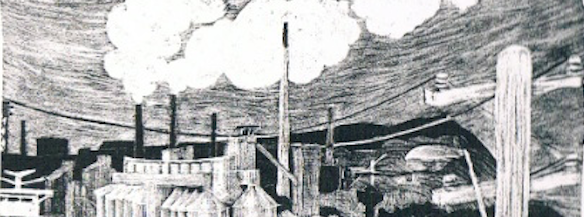
PUBLIC, PRIVATE, COMMON
Richard Mohr
How did so much of our world become private property? In this essay I look at the processes that led to the progressive privatisation of land, of knowledge (as intellectual property), and even of pollution (as tradeable carbon credits). Its history goes back over two millennia in the west, a history that was crunched into not many more decades in Australia. By unravelling some of this history I hope to understand how it has affected our social life and subjectivity. I look at various experiences of urban life to find ways to reclaim our common heritage and revive our collective experience.
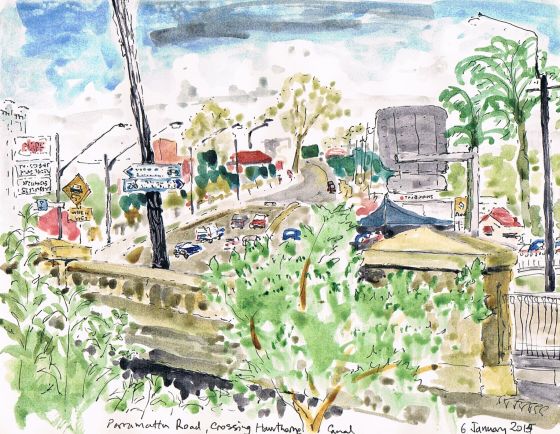
The history of property–public, private or otherwise–is first of all a history of law. In the west that history begins with Rome, where there were many categories of things: belonging to everyone (res communes), belonging to no-one (res nullius), sacred things, things belonging to the state (res publica), and privately owned things. It was only through legal processes that anything became property. Things remained in common ownership, like the waters (sea, rivers), unless they were litigated. Then they might be classified as sacred things (like tombs or temples) or property, either public or private. (Thomas 2015)
From the very beginning this history reminds us of the rich variety of things, and of people’s relationships to them. It has only been in the past couple of centuries that everything came to be thought of as property. That process coincided with the high tide of colonialism, and nowhere was it more stark and brutal than in Australia. What the Romans, like the First Nations of this continent, would have considered common things, like the land and waters, the British Crown declared nobodies’, and immediately appropriated them. Then the land was divvied up as grants among the settlers.
That process continues, except for the belated and partial recognition of a form of common ownership (native title) through the High Court’s Mabo decision. We are left squabbling over smaller and smaller bits of land and water.
I will return to the sorry story of the western privatisation-of-everything. But first I’ll do what little I can to clarify how Australian Indigenous law was, like Roman law, also crucial to ordering people’s relationships to land and other things. Translating Aboriginal law into western terms is perilous, but perhaps necessary to its recognition, as the Yolngu people have long recognised. For them, ‘the only corporate property of the clan is the estate and the sacred songs, rites and paraphernalia that constitute the title deeds to it’ (Peterson, in Williams, 1986). Bruce Pascoe (2014) paints a more richly textured picture when he describes Aboriginal land law as ‘a jigsawed mutualism’:
‘People had rights and responsibilities for particular pieces of the jigsaw but they were constrained to operate that piece so that it added to rather than detracted from the pieces of their neighbours and the epic integrity of the land.’ (p 138)
Here is a system of law and of co-existence with nature and with other people which sees the common as requiring cooperation and mutual consideration. Nothing could be further from the simple ‘res nullius’ that western lawyers could denigrate by that awful cliché ‘the tragedy of the commons’. Assuming that what belonged to no-one (in particular) would be cared for by no-one and exploited by all became a powerful image to support two hundred years of the most aggressive enclosure, exclusion and privatisation in history.
The era of liberal economics, mercantilism and neo-liberalism has coincided with the establishment of Australia as a western nation. It has also seen these systems assert themselves across the globe, through colonisation and globalisation. The exploitative excesses of the nineteenth century blew up with the first World War and Marxist-inspired revolutions in Russia, Hungary and later other places. There was a brief reprieve in that period, as politics revived the public, through the welfare state, and legal scholars and judges questioned the very basis of public and private. During the first half of the twentieth century in the United States it has been said that ‘the most brilliant and original legal thinkers America has ever had devoted their energies to exposing the conservative ideological foundations of the public/private distinction.' These thinkers included Justices Holmes, Brandeis, and Cardozo and the theorists Roscoe Pound and Morris Cohen (Horwitz, 1982, p 1426).
That reaction against the sharp public/private distinction and the respite it offered was halted by the cold war and the confrontation of capitalist versus communist nations and ideologies. This came to its high point with the dominance of neoliberalism in the 1980s-90s. While theoretically and economically discredited, the neoliberal approach still dominates much of politics, particularly from conservative centre-right parties.
Just as the Crown’s appropriation of Aboriginal Land subsequently enabled private acquisition through grants, we might see analogies with the massive state appropriation and development of services and resources in the period of the welfare state. After the revival of neo-liberalism these resources could easily be granted or sold to private interests as going concerns. This is the process seen in Australia, initially with Qantas, Telstra and the Commonwealth Bank. The mania of the New South Wales government for privatisation has since seen the sale of power stations (coal and hydro), the electricity distribution network (poles and wires), Port Kembla and Newcastle Port, public housing, the land titles office, and the bus services of Inner Western Sydney (Rhiannon 2017). Globally, through international trade agreements and treaties, carbon emissions and ‘intellectual property’ in medicine, indigenous knowledge and even life forms (as in plant variety rights) become tradeable commodities.
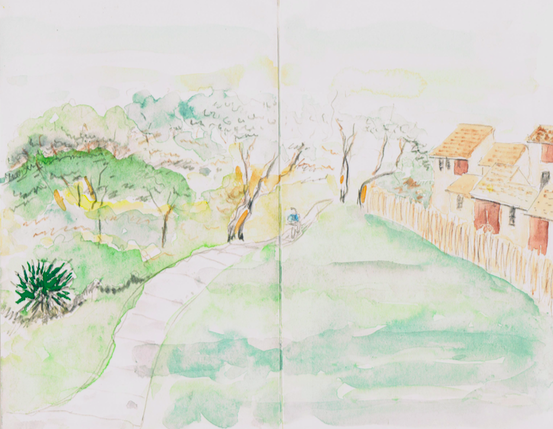
Illustrations: Above: Richard Mohr, Public housing and the shared bike path at Woonona (watercolour, detail from a fold-out Japanese album). Below: Richard Mohr, Paddys Market (ink on paper) (from the Inner West Light Rail series).
Our partners and supporters in this ‘Port, Poles and Wires’ project have been involved in campaigns against the privatisation of state assets and even the intangible assets of nongovernment organisations (NGOs). The Maritime Union of Australia’s work with the community on Port Kembla is discussed by Sharon Callaghan in one of her essays on this web site. The NSW Nurses and Midwives Association campaigned strongly, and successfully, with local residents against the privatisations of Shellharbour and Port Kembla hospitals (as well as those in Wyong, Maitland, Bowral and Goulburn). The Australian Services Union (ASU) continues to alert us to the risk that Sydney Water could be on the block. Private, for-profit services are also favoured by neo-liberal regimes as service providers, not only over state run services but also over non-profit NGOs. The ASU’s ‘No Profit from Rape’ campaign opposes the tendering of the national counselling service for victims of domestic or sexual violence, with the consequence that private operators would try to take over the confidential files of NGOs.
To reinforce and extend these campaigns, we need to rediscover the many ways that people can work together for mutual benefit and the common good. A new critique of liberalism is rediscovering the many distinctions in ownership and control, including common or cooperative ownership, and promoting these alternatives. Dardot and Laval (2014) propose a the rise of the common as the coming ‘revolution of the 21st century’. They see ‘the common’ not simply as shared ownership, but as shared activity (p 48).
‘Against the fashion for essentialising the common, … it is necessary to affirm that it is only the practical activity of people that can make things common. Likewise, it is only this practical activity which can produce a new collective subject, who is very different from the subject who could exist before this activity, the [individual] subject seen as [just] a bearer of rights.' (p 49)
We need to look beyond ‘public-state versus private-corporation’ to appreciate the myriad ways our communities are strengthened by and rely on sharing and cooperation. We find security, support and pleasure in public space, in the structures of civil society. We can be so much more than passive owners, mere shareholders in the state. And these changes in experience and in activity open the possibility of a new subjectivity: indeed they demand it. To try to explain what I mean by this I will conclude with a few examples, focussed on urban life.
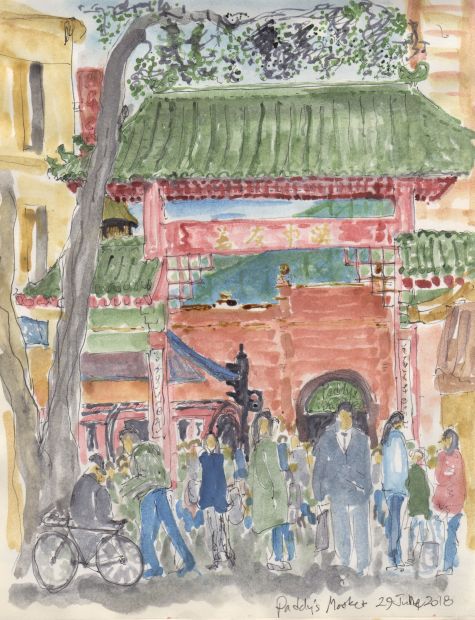
Ownership patterns of land dominate our experience of cities: from housing (whether we own or rent it; through shopping malls, pubs and cafés (on the street or inside); to public streets and parks. To have a home or be homeless, to be comfortable or to be harassed on the street, to be living happily among fellow-beings or to feel threatened and fearful. These are the daily experiences of public and private space. Increasing numbers of people are sleeping rough and in fear, without privacy or belonging. How much better urban life would be if everyone could afford to live where they feel they belong, with access to work and services. And as long as some of us experience that, none of us can really belong.
At the opposite extreme to this isolation there are gatherings in public, whether protests, festivals or carnivals, which contribute to our sense of belonging, even of happiness. (Segal 2017) This belonging works both ways, as Sharon Callaghan has pointed out in her essay ‘Privatising Protest’, quoting Fred Moore: ‘when the workers take to the streets, the streets belong to the workers’. It’s the same with a street festival, when we can walk freely and together in public, without fear of cars or unknown threats. We belong to a place, we belong together, we walk and talk together, the place belongs to us. While building communal celebration, we need also to look out for those experiencing fear, insecurity and isolation.
So to glimpse the difference between belonging on a street and being threatened by it is to glimpse a different experience of living in a city. It can change us, show us new ways of being and of acting together. At its most banal this is perhaps the difference between feeling the camaraderie of public transport and the competitive rush of driving a car. Or even more subtlely, between being a victim of a rapacious profit-focussed bank or a mutual owner of a credit union. The experience of conviviality–of living together–doesn’t come with the price of admission to a venue, but is something we build by acting together: it’s something we gain through that experience.
Our hope through this project, ‘Port, Poles and Wires’, is that not only can we find new ways of seeing, thinking and discussing the public, the private and the common. But that in doing it together with unions and collectives like Red Point Artists and Beyond Empathy, we strengthen our ties and change ourselves.
References and further reading
Dardot, Pierre & Laval, Christian. 2014. Commun: Essai sur la révolution au xxie siècle Paris: La Découverte.
Horwitz, Morton .J. 1982. The history of the public/private distinction. University of Pennsylvania Law Review, 130, 1423-1428.
Mitchell, Don. 2003. The Right to the City: Social justice and the fight for public space. New York: Guilford Press..
Pascoe, Bruce. Dark Emu, Black Seeds: Agriculture or Accident? Broome WA: Magabala Books, 2014.
Rhiannon, Lee. 2017. Sold off, sold out: The disaster of privatisation … and how to reclaim our common wealth. Sydney: The Greens. https://drive.google.com/file/d/0B-EONaz5yLeIRW9OeGw4RFJNWkE/view
Segal, Lynne. Radical Happiness: Moments of Collective Joy. London: Verso, 2017.
Thomas, Yan. Il Valore Delle Cose. Edited by Michele Spanò. Macerata: Quodlibet, 2015.
Williams, Nancy M. The Yolngu and Their Land: A System of Land Tenure and the Fight for Its Recognition. Canberra: Australian Institute of Aboriginal Studies, 1986.
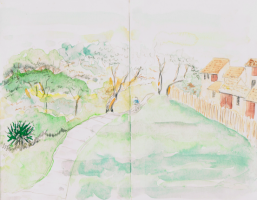
Above: Richard Mohr, Public housing and the shared bike path at Woonona (watercolour, detail from a fold-out Japanese album)
Left: Richard Mohr, Taverners Hill (ink on paper) (from the Inner West Light Rail series)
The black and white image at the top of each of the 'Port, Poles and Wires pages, of Port Kembla with poles and wires, is a detail of Kathryn Orton's lithograph, 'Greetings from Coniston'.

